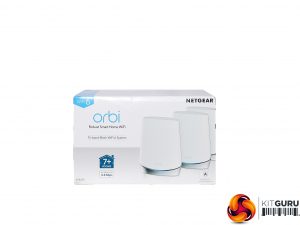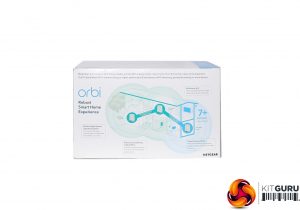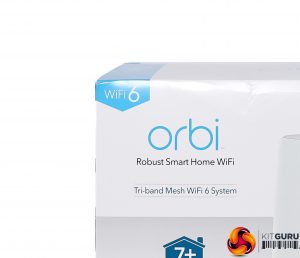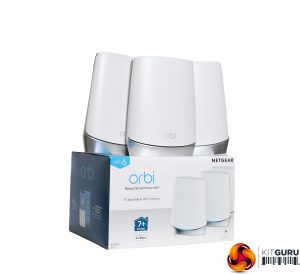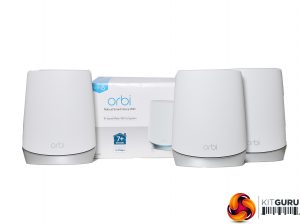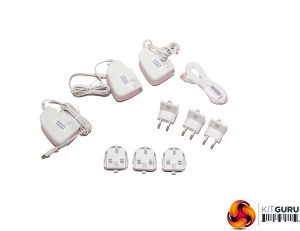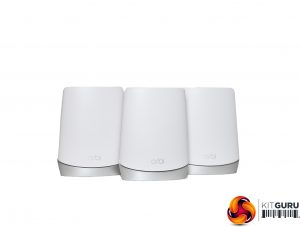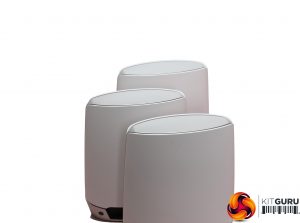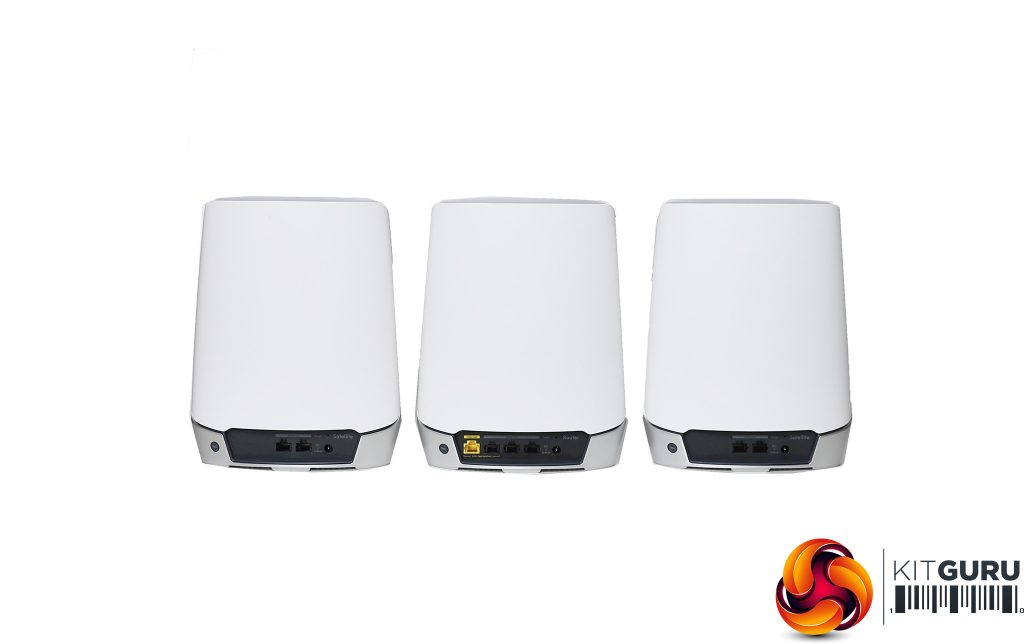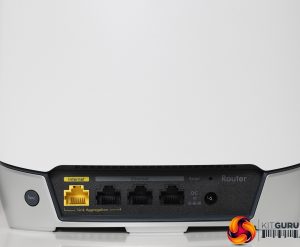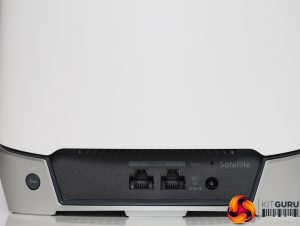NETGEAR Orbi WiFi 6 (AX4200)
NETGEAR has been providing some of the best mesh networking kit for some years now, with its original Orbi AC3000 delivering the leading mesh performance when we pitted it against competitors in our Ultimate Shootout. The company was also one of the first to deliver WiFi 6 mesh networking in the shape of the AX6000 kit we reviewed around a year ago.
But that cost £700 for two units at launch, and hasn't gone down in price since. If your performance needs are a little more modest, however, you can opt for the AX4200 version we have here. We were sent the three-unit kit, which at £610 isn't much cheaper than the AX6000. But you can also get two units for £515, which is a bit more reasonable.
NETGEAR has maintained the same basic design across the Orbi range, and while the AX6000 had some complicated trim the AX4200 units have a simpler look. They're still relatively classy and stylish, but also quite large compared to the other units in this test. Where the AX6000's two units claim to cover 4,000 square feet, the three-unit AX4200 extends this to 6,000 square feet. However, with just two units the AX4200 also covers 4,000 square feet.
In the box you get three units, their respective power adapters with UK and EU plug attachments, plus a ribbon Ethernet cable. One of the units is the router and the other two satellites, although you can't tell from the front which is which.
The biggest headline difference between the AX4200 and previous AX6000 mesh kit is the performance of the radios. The latter has two 5GHz 802.11ax radios able to deliver 2,400Mbits/sec, plus one 2.4GHz radio offering up to 1,200Mbits/sec. Putting those together gets the AX6000 rating. With the AX4200 version, you still get a 2,400Mbits/sec 5GHz 802.11ax radio for the backhaul, but the clients have to make do with 1,200Mbits/sec 5GHz 802.11ax or 600Mbits/sec at 2.4GHz. This potentially means that with legacy 802.11ac devices you won't see much difference between the two models.
Although the satellites and router look the same from the front, you can tell the difference when you look at the port configuration. The router has a yellow Gigabit Ethernet port for WAN (not the 2.5Gbits/sec of the AX6000) and only three Gigabit Ethernet ports for client devices (the AX6000 has four). The satellites only have two Gigabit Ethernet ports, compared to four on the AX6000 satellites. But that still means you can use the satellites to distribute wired networking around the house wirelessly.
NETGEAR appears to have stopped putting USB ports on its Orbi units. The AC3000 units had one, but this initially didn't do anything anyway. The only other feature of note is the Sync button. There aren't power buttons – you will need to unplug to cycle power. You do get a pinhole for resetting the unit to defaults, however. The units in the bundle come pre-paired so all you have to do to get started is plug them in where you want them to be located, although the smartphone wizard does help you ensure they're connected properly.
Price: £610.53 for three units (RBK753); £516.05 for two units (RBK752)
Specification:
Wireless protocols: MU-MIMO with 802.11b/g/n/ax 2.4GHz and 802.11a/n/ac/ax 5GHz
Performance: AX4200 (2,400 + 1,200 + 600 Mbits/sec)
Antenna Configuration: 6×6 Internal Antennas
Ports: Router: 3 x Gigabit Ethernet, 1 x Gigabit Ethernet WAN; Satellite: 2 x Gigabit Ethernet
Modem Support: VDSL/ADSL 2+ or cable
 KitGuru KitGuru.net – Tech News | Hardware News | Hardware Reviews | IOS | Mobile | Gaming | Graphics Cards
KitGuru KitGuru.net – Tech News | Hardware News | Hardware Reviews | IOS | Mobile | Gaming | Graphics Cards


